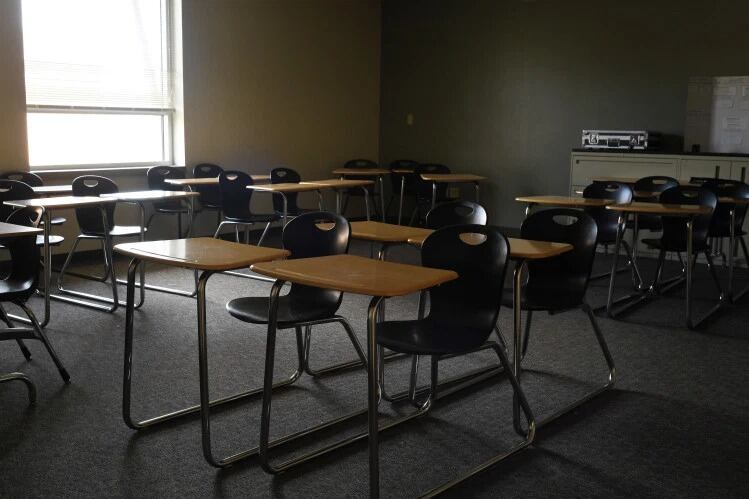Colorado students would have to stay home for 14 days if anyone in their class tests positive for COVID or seems likely to have COVID based on symptoms, but school buildings could remain open for other students and staff until evidence indicates the coronavirus is spreading more widely.
This is according to guidance released Thursday by the Colorado Department of Public Health and Environment on how schools should handle outbreaks of COVID during the school year.
The guidance comes as many Colorado school districts are finalizing their plans to return to the classroom either full- or part-time at the end of August, while others are planning for a remote start to the school year.
Gov. Jared Polis said on Thursday that it’s “reasonably safe” to return to school, even as he has repeatedly acknowledged there will be cases of COVID in school communities. The new guidance is meant to help districts limit the spread within schools when that happens. It also describes when districts should shut down classrooms or entire school buildings.
While the guidance lays out ways school districts could limit the disruption, it’s clear that teachers and students will need to be prepared to pivot to online learning on short notice and that students could be sent home repeatedly during the school year. A single positive case could send several dozen people home for two weeks, and public health officials said all exposed people should quarantine for that time period, even if they test negative.
Colorado public health officials don’t recommend regular testing for students and staff before or during the school year. A negative test can create a false sense of security, the guidance says, and mask-wearing and social distancing will do more to protect students and teachers.
“A negative test means that the person did not have COVID-19 when they were tested,” the guidance says. “A negative test does not mean they are ‘safe’ or ‘cleared’ to be at school.”
Earlier guidance from the public health department and the Colorado Department of Education encourages schools to create cohorts — discrete groups of students and staff that only interact with each other during the school day — to limit the number of people who could potentially be exposed to any sick individual.
Colorado did not put a cap on cohort sizes, and elementary schools are allowed to have normal class sizes of 20 to 30. The state recommends older students maintain more physical distance, which in many cases would lead to smaller class sizes.
The quarantine guidance doesn’t just apply to people who test positive. While Colorado is trying to increase testing capacity and reduce wait times, many people are currently waiting a week or more for results. The guidance also applies to probable cases of COVID, meaning people with symptoms and no alternative diagnosis, such as flu.
If a student or teacher has a confirmed or probable case of COVID, everyone in that class or cohort should stay home for 14 days, the guidance says. Close contacts of the sick person, including siblings and school staff or other students who had more than 15 minutes of contact within 6 feet, should also stay home.
Schools should consider closing when there are cases in more than one classroom that seem to come from transmission within the school, as opposed to two separate students contracting COVID at home and each carrying it to their respective classrooms.
The state recommends that entire schools close when students in five or more classrooms or cohorts have been sent home for COVID exposure in a 14-day period, when more than 5% of unrelated students and staff at a school have confirmed cases of COVID in a 14-day period, when 10% of students and staff are absent for any reason — or when there are so many absences that a school can’t operate properly.
Schools that don’t use the cohort model or that don’t restrict contact between cohorts may face more disruption. They may need to close for several days when someone gets sick so that investigators can figure out who had close contact with the sick person and should quarantine.
Schools are required to tell public health officials about positive cases of COVID, but those names should not be shared with others in the school to protect privacy. The notification form letter included in the guidance starts out similar to the lice and strep throat notifications familiar to any parent but goes on to include more detailed instructions for quarantine.
Polis has said he’ll send large numbers of tests to schools with outbreaks. However, the cost and logistics of testing, according to state public health officials, will remain the responsibility of individuals in most cases.
Colorado public health officials also are putting together a system to monitor absenteeism to identify possible outbreaks based on large numbers of students and staff calling in sick, even when there aren’t positive COVID test results. Similar systems are used by local public health departments to watch for flu and norovirus.
Read the full guidance here.





